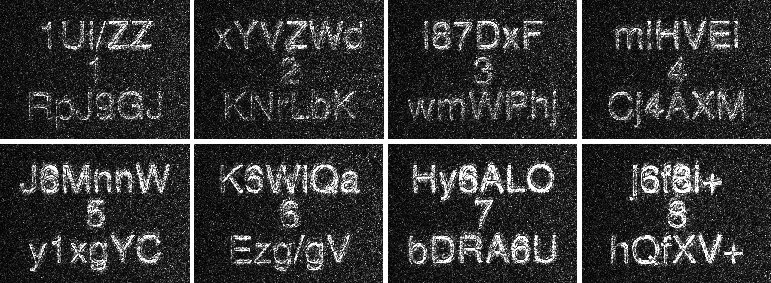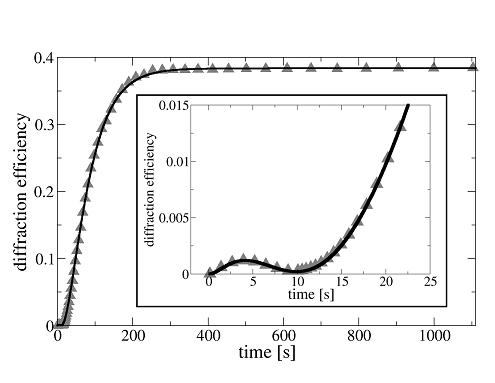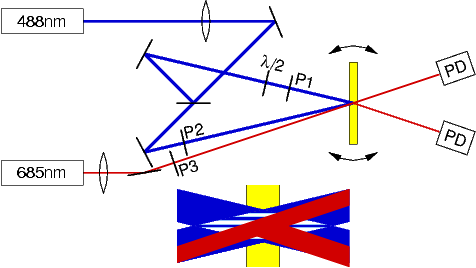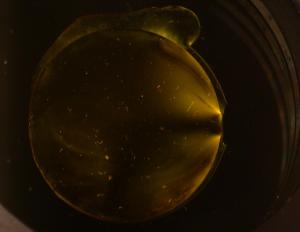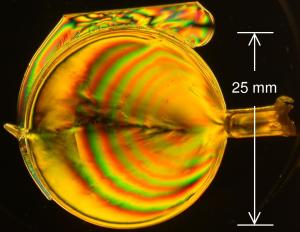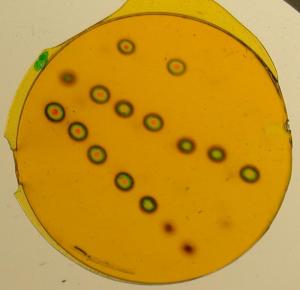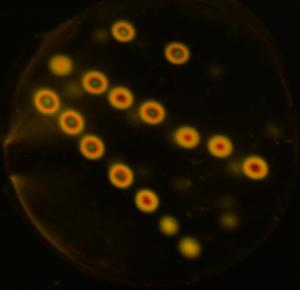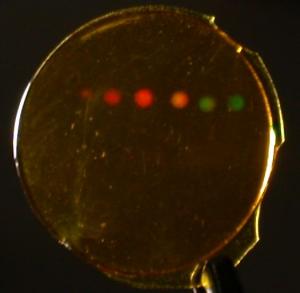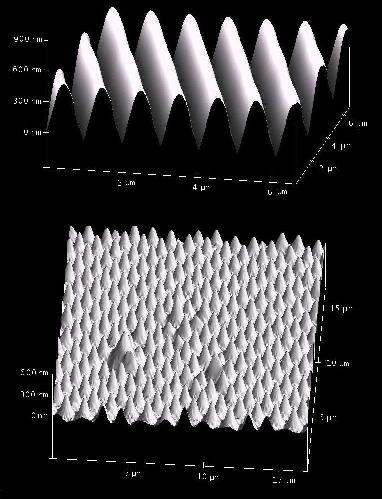Holographic Data Storage
SFB 481 - Project B2
Photoaddressable Block Copolymers for Holographic Data Storage Applications
In project B2, block copolymers with well-defined morphological structures are investigated for holographic data storage applications. Both basic research and practical aspects of these materials are addressed in close collaboration between macromolecular chemistry and experimental physics.
It could be clearly demonstrated that block copolymers bear an important potential for volume holographic data storage. Microphase separation preserves the cooperative effects during reorientation of the chromophores and, thus, enables the preparation of thick samples with low optical density. As a consequence, angular multiplexing of volume holograms without the formation of surface relief gratings can be accomplished. On the basis of these results we pursue the following goals:
Preparation of high-quality samples with thickness up to 2 mm and optical density between 0.5 and 0.7. Two different concepts are applied, namely, dilution of the absorbing chromophores within the photoaddressable blocks and dilution of these blocks within the continuous phase.
Improvement of the long-term stability of the inscribed information by using suitable functional side groups in the photoaddressable block and by applying photoinduced dimerization and polymerization reactions. These reactions are also expected to increase the writing speed of the holograms.
Simplified synthesis of photoaddressable block copolymers using novel anionically polymerizable monomers.
Introduction of combinatorial synthetic methods for the preparation of block copolymers which can be functionalized and for the application of polymer-analogous reactions with side groups of various functions.
Holographic characterization of thin and thick block copolymer samples, especially regarding the achievable diffraction efficiencies and the angular widths of the Bragg peaks.
Measuring the temporal behavior of the birefringence during spatially homogeneous illumination with writing light. This method directly yields the refractive-index anisotropy and supplements the holographic experiments.
Investigating the long-term stability of inscribed gratings (at least during several weeks) at room temperature and elevated temperatures.
Experimental Principle
One or more holographic gratings are inscribed in the materials, and their diffraction efficiencies are measured as a function of time.
For the storage of real data it is necessary to imprint a two-dimensional bit pattern onto one of the writing beams with a LCD display and to read the reconstructed image with a CCD camera. This is accomplished with an additional set-up, which enables us to investigate the achievable storage capacities. For characterizing and quantitatively comparing different materials, however, the inscription of plane-wave gratings and their measurement with photodiodes are better suited.
Galerie
Publications
A full list of publications of L. Kador's group can be found here.

